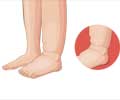Your ankle movements could be a little dangerous in riding a hoverboard, even while learning how to ride it? Thus, the central nervous system must be protected.

‘Ankle movement is primarily used to learn to ride because they’re the joints closest to the board, primates generally learn better with their hands and feet and the central nervous system often tries to minimize muscular effort.’





“Those who learned faster and performed better had strongly adopted an ankle strategy, meaning that they controlled their ankle motion by activating or co-activating the muscles around them,” said Arash Arami, a professor of mechanical and mechatronics engineering at the University of Waterloo, Canada and a senior author of a new study. This has been reported in the journal Scientific Reports.Ankle Management in a Hoverboard
Hoverboards have a motor and two wheels connected by a platform. Riders steer and balance with their feet, although some models are self-balancing.While new riders would be wise to concentrate on ankle movement, the study by researchers in Canada, the United Kingdom and Japan also showed the central nervous system somehow seems to just know the best strategy to use.
After a short familiarization session, volunteers were primarily relying on ankle movements within a few minutes of maneuvering hoverboards back and forth using three different foot positions.
“The process of learning how to ride a hoverboard is largely subconscious,” Arami said. “Interestingly enough, our central nervous system can usually figure it out without much instruction, so take it easy and enjoy the ride.”
Researchers theorize ankle movement is primarily used to learn to ride because they’re the joints closest to the board, primates generally learn better with their hands and feet and the central nervous system often tries to minimize muscular effort.
Advertisement
The results have implications for the design of platforms for balance training for older adults at risk of falls and stroke survivors in rehabilitation clinics. They could also help with the design of hoverboards and similar devices, such as snowboards.
Advertisement
“Hoverboards, as simple as they appear, help us dig into how we control our lower limbs and deepen our understanding of human motor control,” Arami said.
Arami and Mohammad Shushtari, lead author and a PhD candidate at University of Waterloo, Canada, collaborated with engineers at NTT Communication Science Laboratories in Japan and the Imperial College of Science, Technology and Medicine in the UK for conducting this research.
Source-Eurekalert













